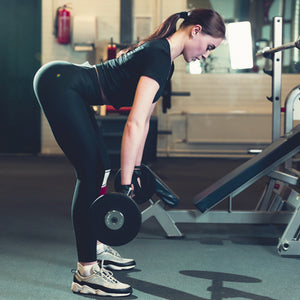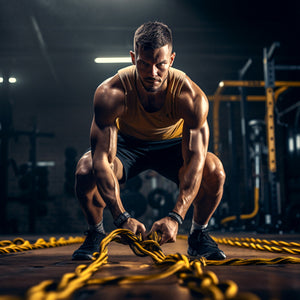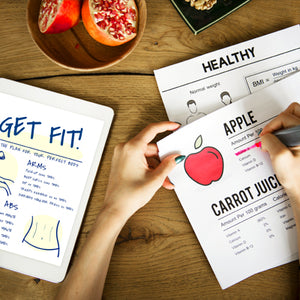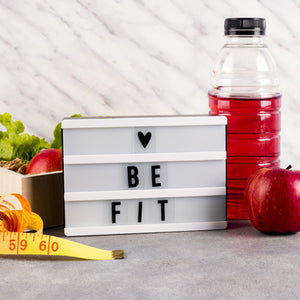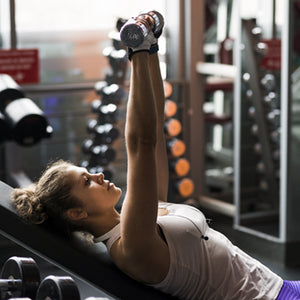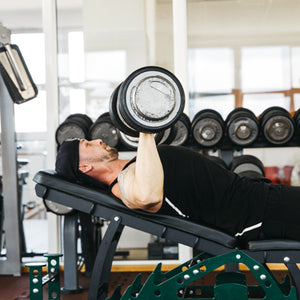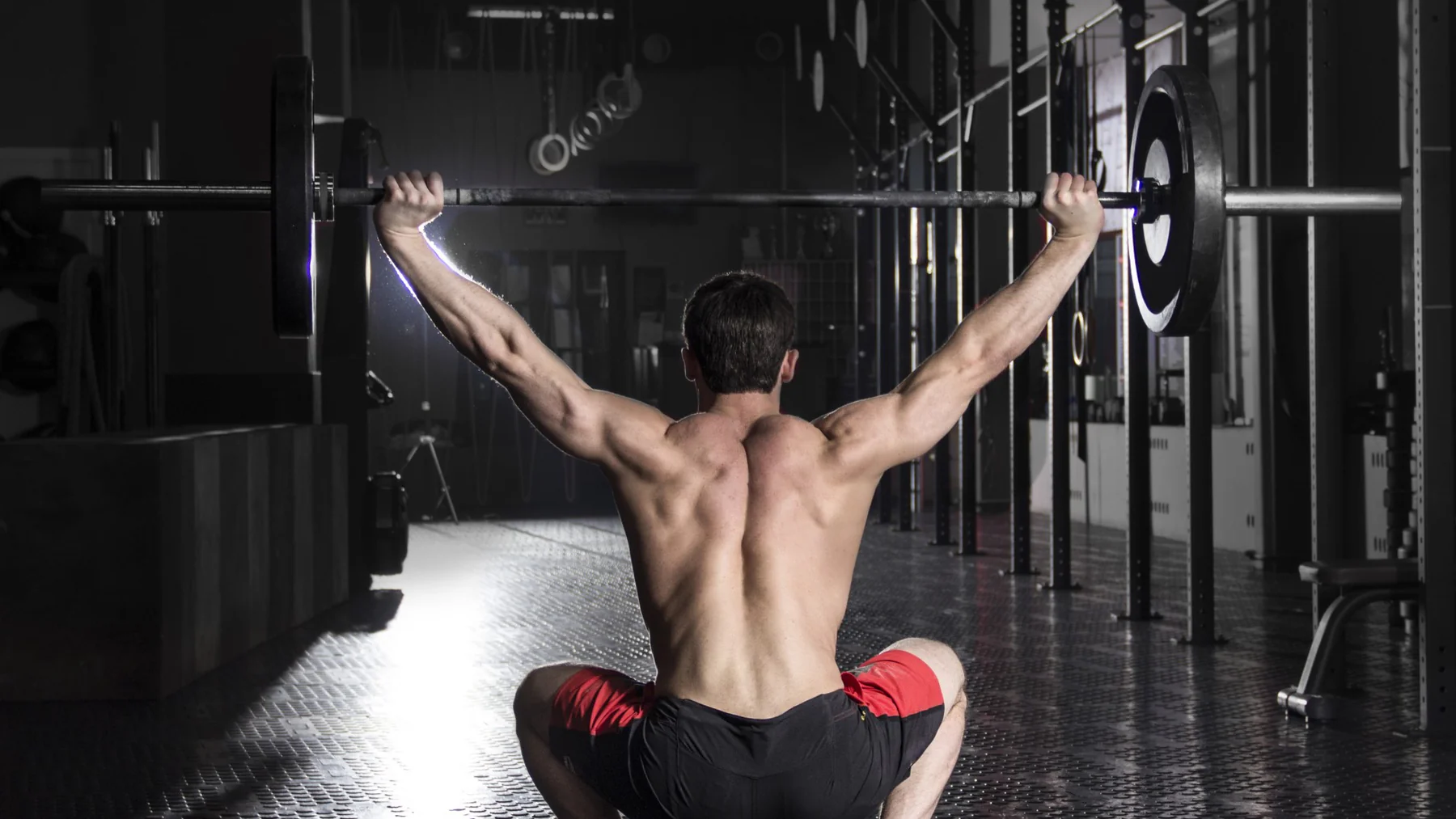
Build Muscle Using An Olympic Lifting Program
Sure, progressive overload is a given. But, well-built physiques that were shown and go was the hallmark of yesteryear's muscle-men. Old school lifters achieved this by using the Olympic lifts in their training - not as a side piece but as a staple.
Modern-day lifters who lean towards building their best bodies (and not the sport of Olympic lifting) often claim that the Olympic lifts are too complex to learn or have little relevance in turning their average bodies into beautiful physiques.
Related: 4 Week Olympic Lifting & Hypertrophy Hybrid Routine
The Olympic lifts - the snatch, clean and jerk and clean and press - were movements regularly trained by old school lifters. And the physiques they built happen to be forming the new benchmark for modern physique.
Bodybuilding contests back in the 1930's were often attached to Olympic weightlifting competitions. In a lot of cases, the fast lifts were done first followed by the judging of each atheltes body.
In fact, about 25% of the athlete's total score could be attributed to the Olympic lifts - these were known as athletic points. The remaining score of 75% would be attributed to muscularity, symmetry and overall appearance.
So, a quarter of your entire score would lean on the Olympic lifts back in the day. Surely, this could alter the decision if the athlete did not do well in the fast lifts. Therefore, old school lifters made it a point to train the Olympic lifts.
Then, as the 70's approached and the IFBB rose to power, events began to be held as standalone bodybuilding competitions only - void of any weightlifting or "athletic points."
This angle has been held in place ever since - which brings us to modern-day bodybuilding.
However, in the decades where the Olympic lifts were trained, plenty of physiques were built that serves as a measure for us today in pursuit of show-stopping physiques. A few of these legends include:
Tommy Kono
Two-time Olympic gold medalist and three-time Mr. Universe.
Sergio Oliva
The unforgettable physique of Sergio might even be a poster in your garage gym. That body was built on weightlifting. The three-time Mr. Olympia trained the Olympic lifts in the 50's and 60's at the national level before switching to bodybuilding exclusively.
Franco Columbu
Mr. Universe and two time Mr. Olympia voices that he had a 270-pound snatch, and a 400-pound clean-and-jerk.
Bob Gadja
The 1966 Mr. Universe was also training partners to Sergio Oliva (from who he learned the three lifts). He was a huge proponent of Olympic lifting and claims that the method gave him that "mature and finished" look.
Reasons Why You Should Include Olympic Lifts Into Your Training
The sports performance and functional training worlds have no shame in trumpeting the message: Olympic lifts are effective movements for increasing power and explosiveness.But, there isn't much hype around the Olympic lifts when it comes to building mountains of muscle. It's time to think twice about turning the cheek to the Olympic lifts if your primary concern is building muscle and looking like a Greek god.
After all, it's not like this angle hasn't been leveraged before - numerous examples of old school lifters built some of the best physiques of all time and they all did the Olympic lifts.
Here are a few reasons to include the Olympic lifts into your toolbox of muscle building movements.
Reason #1 - Fuller, denser muscles
Who doesn't want fuller, denser muscles?
It's no secret that bodybuilders spend a lot of time training in the 8-12 rep range and above. This type of training induces sarcoplasmic hypertrophy: an increase in volume in the non-contractile muscle fluid, sarcoplasm. Although the size of the muscle increases, there is little to no increases in muscular strength.
Myofibrillar hypertrophy on the other hand, is the enlargement of muscle fibers, myofibrils. Myofibrils are responsible on contraction and generate tension in the muscle. Contrary to sarcoplasmic hypertrophy, this type of muscle building increases the density of the muscle and offers muscular strength gains. Myofibrillar hypertrophy is induced with heavy weights usually ranging from one to five reps.
It turns out that the Olympic lifts attack the type II muscle fibers due to their near-maximal load nature along with low rep ranges. This leads to increases in force production which means more type II muscle fibers being recruited which offers you a ticket to the promise land: Bigger, denser and fuller muscle bellies.
Reason #2 - Your squat gets better
If you can't front squat 135 pounds without collapsing like the cheeks of starved man, then you have no business snatching or cleaning. And you probably don't even look like you lift.
Google Lu Xioajun, and take a look at his quads. Tell me you wouldn't give up your pinky like Ronnie Lott in order to exchange your wheels for his set.
Lu doesn't do endless leg extensions. He squats - a lot.
Reason #3 - Improved posterior chain strength
The Olympic lifts demand that your posterior chain - the entire backside of your body - is up to par to handle the loads.Why? Well, each of the Olympic lifts starts from the floor, which means you have to pull it off the ground in order to attempt the lift.
The glutes, hamstrings and low back are often the weak points of physique minded lifters. While leg curls have their place, they have no chance against snatches, cleans, and all of their variations.
The Olympic lifts and their accompanying variations are potent posterior chain builders and are far more effective than spending hours on leg curl machines.
Reason #4 - A back wider than a barn door
The hallmark of an unstoppable physique is the V-taper. It's the look that can't go unnoticed. In order to build a big back, the lats must be developed. If not, you end up looking like a pear.A way to safeguard yourself from this is to incorporate the Olympic lifts into your training. In order to do the snatch and clean and jerk, you must keep the bar close to the body throughout the pull - this puts isometric tension on the lats each time your pull the bar off the floor.
With the snatch, you're essentially performing a snatch grip deadlift - similar to the Reeves deadlift - that builds your lats to make you look like you're wearing a superhero cape.
Reason #5 - The Asians prove that reps matter when it comes to body composition
In the sport of Olympic lifting, most athletes use a highly specialized approach. Meaning the concentrate most of their efforts on the main lifts with very little assistance work.At first glance, this makes sense. It's a classic energy management strategy: Conserve your energy for the main tasks (snatch and clean and jerk along with all variations), front and back squat, hyperextensions, etc. Most lifts are done in the 70% - 100% range done in singles, double, triples with the aim of technical mastery.
But the Chinese and North Korean lifters are an exception. And it turns out they also have the best looking physiques.
Among the weightlifters of the world, the Chinese and North Koreans are the ones who utilize assistance work the most. They do tons of lateral raises, rows, pull ups, dips and direct arm work. In fact, it's commonplace for them to spend the last portion of their training sessions dedicate to bodybuilding work alone.
So for the modern lifter, this offers some insight. Old school lifters did the Olympic lifts coupled with traditional bodybuilding work, and currently, the Chinese and North Koreans do the same.
This means the modern day lifter can do it too. Physiques can be built for show and go.
Below you'll find a template you can use to start building your physique with Olympic lifts incorporated into your training program.
Olympic Lifting Program for Muscle
There are a few things to consider before you follow the suggestions below:- This template is not for those who have no experience in the Olympic lifts. I suggest you take some time to become technically proficient in the lifts before you attempt to use them as a staple in your training (this means practicing hundreds, maybe even thousands of reps at light weight).
- This template is for those who have a foundational base training the Olympic lifts, but want to make some muscle gains too.
- This is not for a high-level lifter who competes at any level in the sport of Olympic weightlifting.
Exercise A
5 x 1-3 of main lift (snatch, clean, jerk)Exercise B
3 x 4-6 on two to three assistance movementsTwo or three assistance exercises that augment the main lift trained that day.
Snatch assistance work:
- Overhead squat
- Snatch high pull
- Snatch grip push press
- Snatch balance
- Snatch pull from blocks (mid-shin, knee, and thigh)
- Front squat
- Deadlift from blocks (mid-shin, knee, and thigh)
- Clean pull
- Power shrugs
- Handstand push-ups
- Press (seated, military, push press)
- Power jerk
- Presses from split stance position
- Presses from pins (chest, forehead, and halfway to lockout)
Exercise C
3 x 12-20 on bodybuilding movements- Lateral raises
- Barbell curls
- Hammer curls
- Rear delt raises
- Front raises with a weight plate
- Incline board sit-ups
- Leg raises
- Parallel bar dips
- Bench dips
- Pull-ups
- All variations of pull downs
- One arm dumbbell row
- Reverse hyper extensions
- Good mornings

